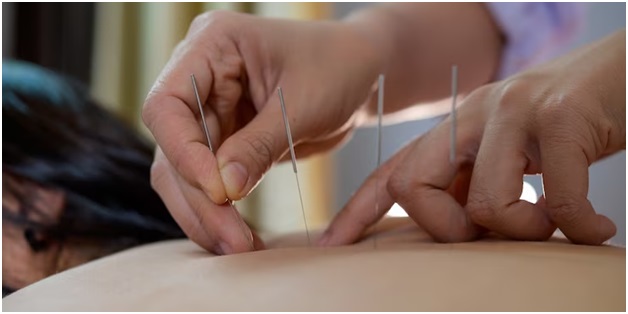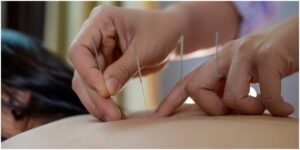Dry needling has emerged as a widely embraced therapeutic method for managing pain and promoting muscle relaxation. Rooted in traditional Chinese medicine, this technique involves delicately inserting slender needles into specific points on the body to stimulate natural healing processes. With a historical foundation and contemporary popularity, dry needling is gaining recognition as a non-invasive and effective approach to address various musculoskeletal issues. This article will delve into the definition of dry needling, its potential benefits, and considerations for those contemplating it as a treatment option.
Definition of Dry Needling
Dry needling, a therapeutic intervention targeting muscle pain and dysfunction, focuses on inserting thin needles into tense areas of muscles known as trigger points. Originating in traditional Chinese medicine, this practice has found contemporary application in physical therapy, particularly for its potential to swiftly alleviate chronic muscle problems. The fundamental principle behind dry needling is to release tension in trigger points, thereby mitigating pain and enhancing range of motion. Learn more about dry needling here https://www.benchmarkphysio.com/dry-needling/.
Muscles consist of fibres that contract when stimulated by electrical impulses from the brain through nerves. Overstimulation, often due to stress or trauma, can result in knotted tension within these fibres, causing persistent pain or restricted movement. Dry needling intervenes by inserting needles directly into these tight trigger points, promoting tension release, reducing inflammation, and restoring normal movement patterns.
Benefits of Dry Needling
Dry needling has gained popularity among physical therapists and medical professionals due to its reported benefits. Some potential advantages include:
Reduced Pain: As part of a comprehensive treatment plan, dry needling can alleviate pain associated with muscle tightness or overuse injuries by inducing relaxation in tight muscles.
Increased Mobility: By releasing tension in muscles that limit movement, dry needling can enhance the range of motion, leading to improved performance in physical activities.
Improved Circulation: The procedure increases blood flow around needle sites, facilitating the delivery of oxygen-rich blood cells. This aids in quicker healing, particularly in conditions involving chronic inflammation.
Risks and Complications Associated with Dry Needling
While dry needling is an effective treatment for musculoskeletal pain, it comes with potential risks and complications. The primary risk is infection due to needle insertion. Proper sterilization of equipment and the use of single-use disposable needles are crucial to minimize this risk. Additionally, there’s a possibility of nerve damage or bruising, which can result in temporary or permanent issues such as numbness, tingling, or paralysis. Awareness of these risks is vital for informed decision-making.

Conditions That Can Be Treated with Dry Needling
Dry needling has proven effective in treating various conditions, including:
Musculoskeletal Pain: Alleviating pain by reducing tension, increasing blood flow, and promoting faster healing after injuries or strains.
Myofascial Pain Syndrome (MPS): Targeting chronic pain caused by tightness in the fascia, resulting in decreased stiffness and tenderness.
Headaches: Addressing trigger points around the neck area associated with poor posture or stress-related tension, potentially reducing the frequency of headaches.
Contraindications of Dry Needling
While dry needling offers benefits, it’s not suitable for everyone. Contraindications include a history of bleeding disorders or anticoagulant use, which can elevate the risk of excessive bleeding or bruising. Additionally, ongoing infections near the treatment area may warrant postponing dry needling until the infection resolves.
Conclusion
In conclusion, dry needling stands as a safe and effective option for managing various musculoskeletal issues. Its ability to alleviate muscle tension, reduce pain, and enhance range of motion makes it a compelling alternative to traditional treatments. Although potential risks exist, they are minor compared to the potential benefits, positioning dry needling as a valuable tool in the realm of chronic pain and musculoskeletal disorder management.










